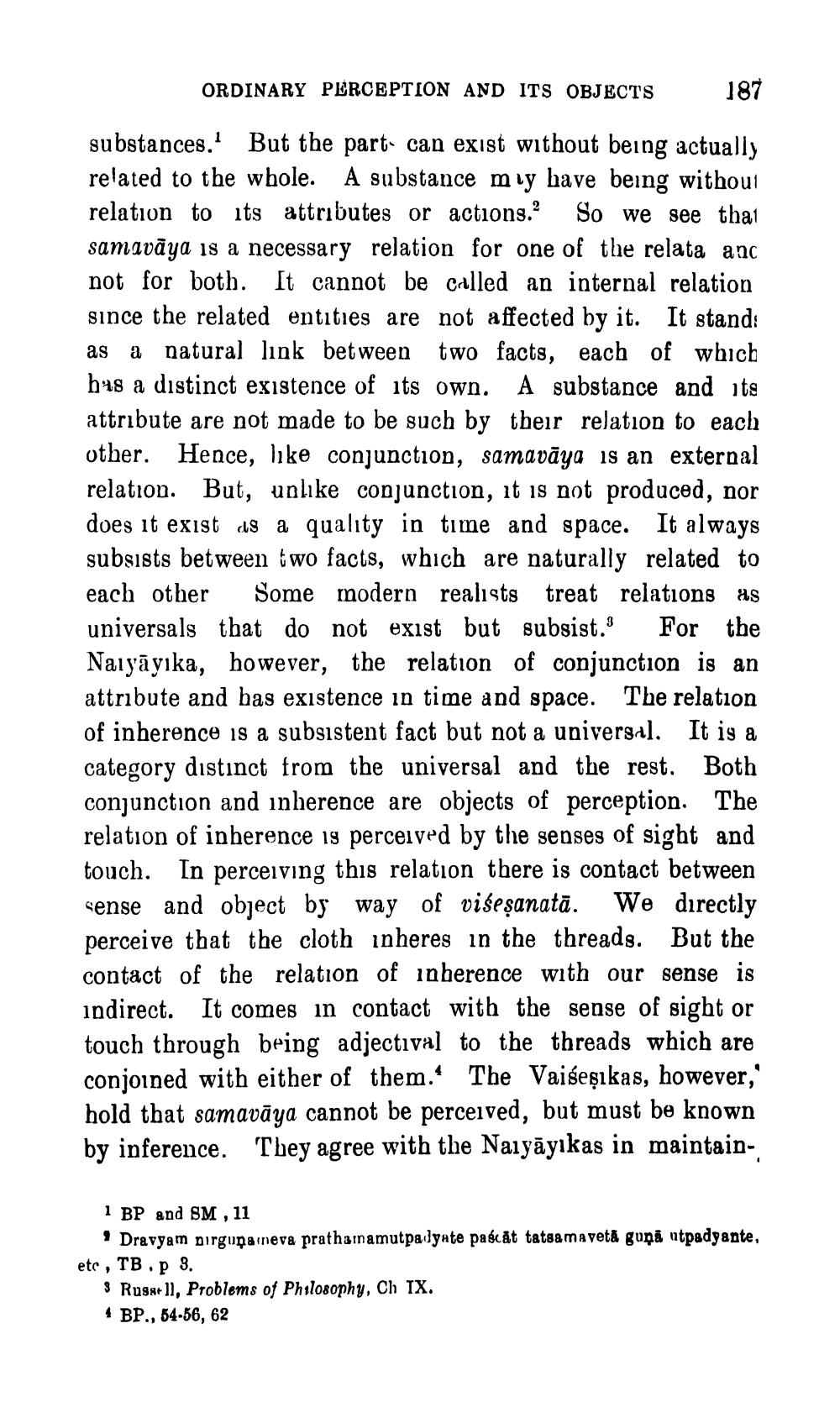________________
ORDINARY PERCEPTION AND ITS OBJECTS
187
substances. But the part. can exist without being actually related to the whole. A substance muy have being without relation to its attributes or actions. So we see that samavāya is a necessary relation for one of the relata ang not for both. It cannot be called an internal relation since the related entities are not affected by it. It stand: as a natural link between two facts, each of which hus a distinct existence of its own. A substance and its attribute are not made to be such by their relation to each other. Hence, like conjunction, samavāya is an external relation. But, unlike conjunction, it is not produced, nor does it exist as a quality in time and space. It always subsists between two facts, which are naturally related to each other some modern realists treat relations as universals that do not exist but subsist. For the Naiyāyika, however, the relation of conjunction is an attribute and has existence in time and space. The relation of inherence is a subsistent fact but not a universal. It is a category distinct from the universal and the rest. Both conjunction and inherence are objects of perception. The relation of inherence 19 perceived by the senses of sight and touch. In perceiving this relation there is contact between sense and object by way of visesanatā. We directly perceive that the cloth inheres in the threads. But the contact of the relation of inherence with our sense is indirect. It comes in contact with the sense of sight or touch through being adjectival to the threads which are conjoined with either of them. The Vai eşikas, however, hold that samavāya cannot be perceived, but must be known by inference. They agree with the Naiyāyikas in maintain
1 BP and 8M ,11
Dravyam pirguna meva prathamamutpadyate pascat tatsamaveta guņi atpadyante, ete, TB .p 3.
3 Russell, Problems of Philosophy, Ch IX. 4 BP., 54-56, 62




